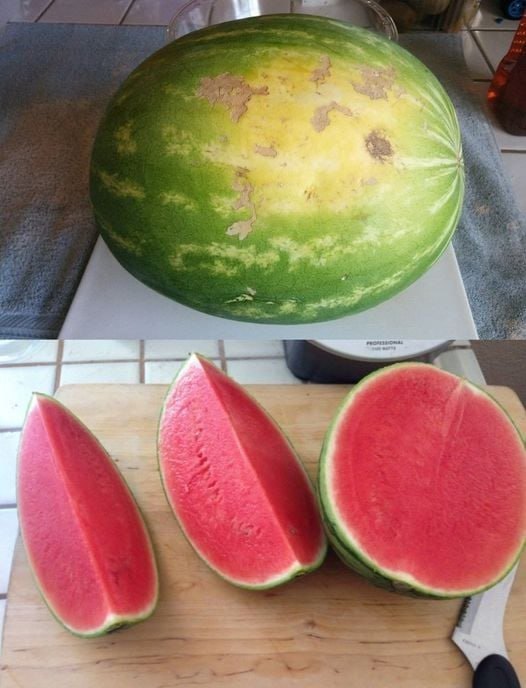When it comes to selecting the perfect watermelon, a few smart tricks can make all the difference. Start by flipping the melon over and checking the underside for a creamy yellow spot—known as the field spot. This is where the watermelon rested on the ground while it ripened. A rich golden-yellow or deep orange color here is a great sign the fruit matured properly in the sun, meaning it’s likely to be sweet and full of flavor. If that patch is pale or barely visible, the melon was probably picked too soon and may lack taste.
Next, pay attention to the rind. Look for rough, brown, web-like patterns on the surface. These marks, sometimes called sugar scars or bee stings, are actually signs of successful pollination. The more of this webbing you see, the better—the theory is that heavily pollinated fruit tends to be sweeter, thanks to the work of diligent bees during the flowering stage. It’s a natural clue that sweetness is locked inside.
Another tip many don’t know is to consider the shape of the melon. Watermelons are often categorized as either “male” or “female.” Male melons tend to be elongated and have a higher water content, making them less sweet. Female melons are rounder and usually more flavorful. If your goal is juicy and sugary rather than just hydrating, go with the rounder ones.
see continuation on next page
ADVERTISEMENT

